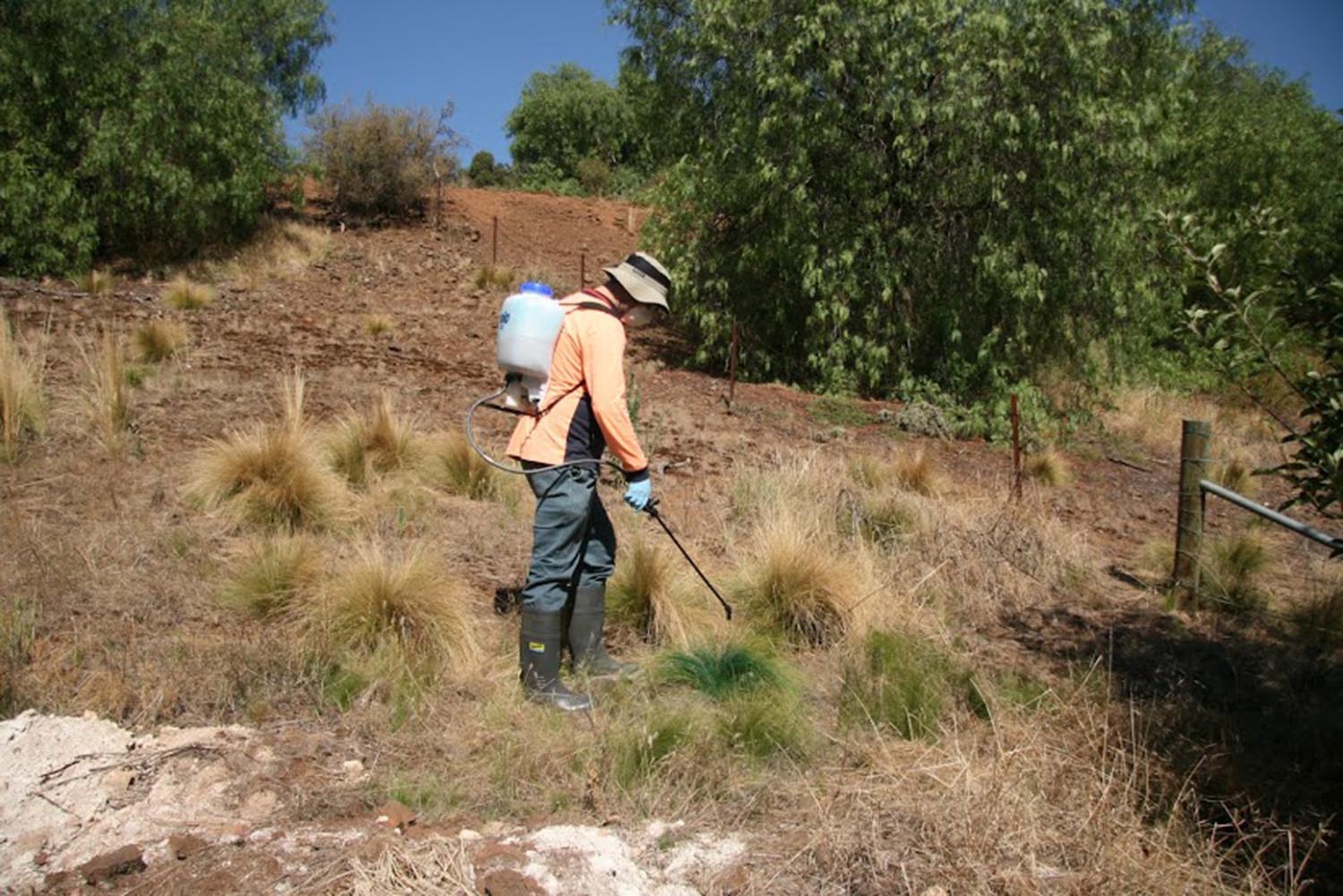How to address flupropanate shortages
There are currently supply issues with the selective herbicide flupropanate, with supplies likely to be limited for some time. The shortages of flupropanate are more likely to impact landowners with larger properties and higher densities of serrated tussock.
Whilst supplies of flupropanate are limited there are a number of other management options:
- Redistribution of personal supplies of flupropanate to high priority areas.
- Spray topping with glyphosate as an alternative management strategy.
- Slashing before flowering.
- Plan ahead
Make sure to seek advice from an agronomist or chemical supplier for your particular situation, and always follow the product label.

Distribution of personal supplies of flupropanate
Some landowners have flupropanate supplies that could be redistributed to landowners with high priority serrated tussock infestations.
The VSTWP ask landowners and Landcare groups to:
- Identify flupropanate supplies (the herbicide must be in its original packaging).
- Work with landowners and Landcare to strategically allocate stores to manage high priority serrated tussock infestations across your region this coming season.
Alternatively, landowners that are interested in selling large quantities of flupropanate can contact the VSTWP on info@serratedtussock.com
Spray Topping with Glyphosate
Spray topping uses low label rates of glyphosate to reduce or prevent seed-set in serrated tussock. This may help in reducing the serrated tussock while doing minimal damage to beneficial species.
It can be used as a broad acre treatment to stop serrated tussock seeding. It will not kill serrated tussock plants, but will affect them so that they do not flower, or if already in flower will not produce viable seed. However, spray topping will not kill seed once it as already formed on the plant. Always use with other methods of control such as spot spraying, chipping and grazing management.
Spray topping is suitable as a short term option only and particularly in pasture situations with medium to high level infestations of serrated tussock.
The timing for spray topping is critical for this method to be effective. For glyphosate, treat prior to flowering, around mid-August to mid-October. Always apply herbicide in accordance with label directions.
Slashing before seed set
Slashing reduces the height and seed production of serrated tussock plants using a mower or slasher or similar tool. Slash before the weed flowers and reduce its height to just above ground level. Regularly clean machinery to prevent further spread. Slash weed-free areas first and train operators in machinery hygiene and identifying serrated tussock. Slasher covers and mower blowers may reduce the spread of seed.
Slash in late winter to early spring to prevent seed head production and to prepare for crops or pasture. Avoid slashing when serrated tussock is in seed.
Slashing may limit seed production if conducted at the right time of year. It can reduce fire risk and limit soil disturbance. However, slashing doesn’t kill the plant and can stimulate serrated tussock growth. It may increase the spread of seed without precautions such as machinery hygiene.
Follow up with regular mowing and slashing to maintain low serrated tussock growth. Control plants with other suitable techniques.

Plan ahead: Use this time to plan ahead. Identify alternative options to control serrated tussock. Developing a three year plan for controlling serrated tussock. Identify suitable contractors or what equipment you will need to do the work yourself. Talk to your neighbours and Landcare group about coordinated control for your area. Look through this website which has lot of information on the impacts of serrated tussock, identification notes, management options, and community support.